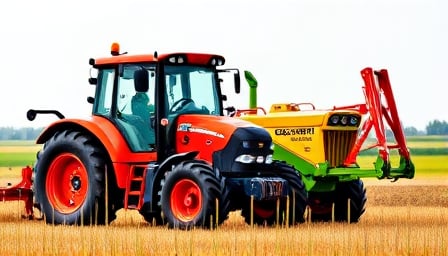Deere & Co Faces Brazil Sales Headwinds Amid Global Trade Tensions
Deere & Co, the titan of agricultural and construction equipment, is confronting a potential dip in sales in Brazil—a market that has long been a linchpin of its global footprint. According to a senior executive, the company anticipates a single‑digit decline in 2026, a figure that, while modest on paper, signals a precarious shift in an environment already strained by geopolitical volatility and fiscal policy uncertainty.
The Brazil Conundrum
Brazil’s high domestic interest rates, coupled with the looming threat of U.S. tariffs under President Donald Trump, create a perfect storm of financial drag. The executive’s candid admission—“sales in Brazil could fall by a single‑digit percentage” —underscores the fragility of Deere’s revenue streams in the region. A 2‑5 % contraction in Brazil alone could ripple through the company’s earnings, given that the country represents a significant share of its agricultural equipment sales.
The Brazilian market is not merely a passive backdrop; it is a strategic arena where Deere competes with local manufacturers and foreign entrants. A downturn here could erode the company’s market share and accelerate price wars, forcing margin compression.
Market Sentiment: Calm on the Surface, Storm Below
Despite the looming threats, Deere’s stock has shown remarkable steadiness, closing near $470 USD in recent sessions. This stability, however, is a fragile veneer. Investors are on high alert, scanning every quarterly report for signs of deteriorating profitability. The market’s cautious posture reflects an underlying anxiety: a single negative quarter could trigger a cascade of sell‑offs in a sector already susceptible to cyclical swings.
Competitive Landscape: Corteva’s Strategic Split
In related industry developments, Corteva is contemplating a bifurcation of its operations into distinct seed and pesticide entities. This strategic move could reshape the competitive dynamics that Deere navigates daily. By segregating its core businesses, Corteva might streamline focus and sharpen competitive edges, potentially intensifying price and innovation battles against Deere.
Should Corteva’s split materialize, Deere could find itself facing a more agile and specialized rival in both the seed and pesticide domains—areas where the company already competes for market dominance. This shift would require Deere to accelerate its own product differentiation and cost‑management initiatives to maintain its leadership position.
Navigating the Global Turbulence
While the challenges—Brazilian sales contraction, investor caution, and heightened competition—are undeniable, Deere’s diversified portfolio and robust capital base provide a buffer. The company’s extensive product lineup across agriculture, construction, and forestry sectors offers multiple revenue streams to absorb shocks in any single market.
Yet, complacency is not an option. To safeguard its margins, Deere must:
- Aggressively hedge against tariff uncertainties and currency fluctuations.
- Invest in localized production in Brazil to mitigate interest‑rate‑induced financing costs.
- Accelerate R&D in precision agriculture and electrification—areas where competitors like Corteva are intensifying focus post-split.
- Engage in proactive dialogue with policymakers to anticipate and influence trade and fiscal policies that could further impact the company’s operations.
In the end, Deere’s trajectory will hinge on its ability to translate these strategic imperatives into execution. The company’s current stability may mask underlying vulnerabilities that, if left unaddressed, could erode its market leadership. Investors, regulators, and competitors alike will be watching closely to see whether Deere can turn these headwinds into opportunities or succumb to the mounting pressures on its global business.
